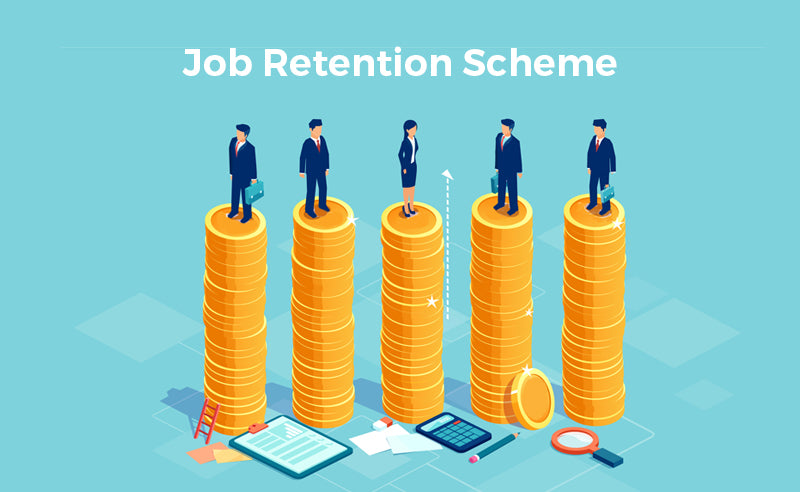
Job Retention Scheme
On Friday of last week following the announcement of the shut down of the hospitality and leisure sector, the Chancellor announced the Job Retention Scheme. This was the headline grabbing announcement, as the country started to move into lockdown, that the Government will support business by paying 80% of an employee’s salary for those employees who are unable to work and would be laid off as a result of the covid-19 crisis. The term furlough worker being introduced.
HMRC are tasked with setting up and implementing the scheme which, based on their current timeline, they are expecting to go live at the end of April 2020. Until this date, employers will have to continue to meet employees’ wages.
Details of the initial announcement can be found at HERE
Other than a few statements from HMRC, which we have reported regarding timeliness, and warning employers not to abuse the scheme, there has been little further detail. There have however been a number of individuals making statements, giving opinions on the scheme, what it will look like etc – many say they have sources from where they are getting the information. However, the Government position at the moment is per the information released following the announcement which can be found at HERE
We have collected below various opinions, comments, views, from individuals who we believe may have had some input to the scheme and our professional bodies who are in communication with HMRC, which we have set out below.
- Any employee who has been subject to PAYE will be eligible for the scheme, therefore claims can be made for directors (see below) and casual workers;
- The scheme will last for at least 3 months and will be extended if necessary;
- There will be no provision to partially furlough staff. This means employees will need to be entirely non-active to qualify;
- It is available to employees on the payroll at 28 February 2020. We have seen advice that if you have a new employee, who doesn’t meet the above date, ask them to go back to their old employer and see if they will consider a furlough arrangement. We are not sure how that works from an employment law perspective, and believe many employers will be nervous about this;
- The grant can be backdated to the 1 March 2020, but will be limited to being backdated to the day the employee completely stopped undertaking work post 1 March 2020. As employees are required to be completely inactive, the scheme will not apply to employees who have been put on reduced hours. So, if an employee had a reduced workload because of covid-19 from mid-March, and then their role ceases from 31 March 2020 as their site closes, then the grant could only be backdated to the 31 March 2020;
- Zero-hour contract employees come within the scheme, and employers will be required to use an average of their hours worked to calculate the amount available under the scheme. However, no information on what period of time is used to calculate the average is available yet;
- Although directors qualify, as they are employees who are paid via PAYE, the majority of owner managed businesses, take a low salary and in the main are remunerated via dividends, as they are also the business owner. As dividends are not subject to PAYE, at the moment (unless there is a change), dividends are not covered by the scheme. Therefore, owner managers who have a low salary, high dividend policy are likely to receive something, but not as much as they have been taking from the business;
- We think a further issue arises for owner managers regarding whether they qualify to be able to certify themselves as being non-active, so as to be a furloughed employee. This is because someone needs to be there to manage the business, for example deal with the payment of the employees under the scheme, therefore they are unlikely to be completely inactive and therefore may fail the qualifying condition;
- Where an employee has two jobs and is furloughed with one employer, the current understanding is that the employee’s second job, provided it is with an unconnected employer, will be unaffected;
- The employer will pay the employee through payroll, using the Real Time Information (RTI) system as usual, as required by the employment contract. This contract may be renegotiated, but that is a matter for employment law. So RTI system reporting of payroll will continue as normal.
Our view from what we have seen and heard, which is only a view, is as follows:
- If an employee is designated a furloughed employee, they cannot do any work of any kind. The easiest example to give relates to those employees who can only work when their place of work is open, which applies to those employees in the leisure and hospitality trades, who saw their places of work close the same day as the announcement. However, we believe that other than the shut down cases (likely to include construction later this week), where a business trading activity starts to slow down or become non-existent due to the virus, then this situation is also covered;
- The 80% grant is going to be calculated by referring to a previous pay period. The previous reference period hasn’t been worked out yet, and details are required to deal with the period of calculation for zero-hour contracts and for seasonal workers. We don’t believe it is helpful or probably legal (once the anti-avoidance measures are known) that salary increases suddenly take place in the month of March. In any event, as the grant will be calculated from a previous pay period, increasing employee wages now will have no impact on what would be paid via this scheme;
- If any element or part of an employee’s role is able to be undertaken, for example they have been designated as the individual to attend the office once a day to collect and sort post and deliveries, albeit, this may only take a couple of hours, it is likely to mean the employee will not qualify for the scheme;
- The grant paid will be 80% of the reference period wage, plus employers’ NIC and the legal minimum pension contributions. For example, if the 100% wages per month are £1,000 and employers’ NIC was £115 and pension contribution £30, the total cost to the employer would be £1,145. It is this amount that the grant would be payable on. Therefore, in this situation, the maximum grant would be £916 per month. The employee is taxed to PAYE and employee NIC on the payment as normal;
- There may be some flexibility for a furloughed worker returning to work and then going back on furlough, but if any is provided, it will be limited;
The ICAEW has provided some examples of how they view the scheme will operate:
X Ltd employs Mr A at an annual salary of £24,000, so £2,000 per month. Mr A has opted out of auto enrolment. Each month, Mr A currently receives net pay of £1,665 which is after deducting PAYE of £191 and employees NIC of £144. On this salary, the employer pays employers' NIC of £174. The available grant for the employer should be the lower of:
(a) 80% of (£2,000 + £174), and
(b) £2,500
So a grant of £1,739.
The cash required by X Ltd to furlough based on maintaining the existing salary is £435 per month. It is a matter for employment law or an agreement with the employee whether the employer is required to pay this top up.
Business closure example:
Mr & Mrs Fuller are the tenants of a pub. Mr & Mrs Fuller operate the pub through a limited company (Pubco). They take salaries of £8,600 each and withdraw profits of £30,000 each in the form of dividends. They live above the pub and work long hours being in the pub every day.
Pubco employs three permanent staff supplemented by extra seasonal staff in the Summer months and at Christmas.
The pub closed on 20 March 2020 as instructed by the Prime Minister. and following the Chancellor’s announcement on 20 March 2020, Pubco has furloughed its staff other than Mr & Mrs Fuller who are still living above the pub and dealing with the company administration. The contracts of employment of the other staff have been varied to permit furloughing and the three permanent staff members have agreed to accept a pay reduction to 80% of the previous level. The seasonal staff for this year have not yet been hired.
The understanding in the above example, is that Pubco will be eligible to receive the government grant support under the Job Retention Scheme for the monthly wages of the 3 permanent staff members. No grant support is available to support the living costs of Mr & Mrs Fuller.
Mr & Mrs Fuller will need to look for alternative support while the pub remains closed.
One final point is that the job retention scheme is an option, it is not a right. We have had clients call us about employees who have demanded that there is a legal right to the scheme. This is not correct, although if the business wants to get up and running the other side of the crisis quickly, then looking after the workforce is a key factor.
We would stress that the above is a view and not official guidance, as this is still to be published. In addition, there are a number of employment law matters that need to be considered, on which legal advice should be sought.



